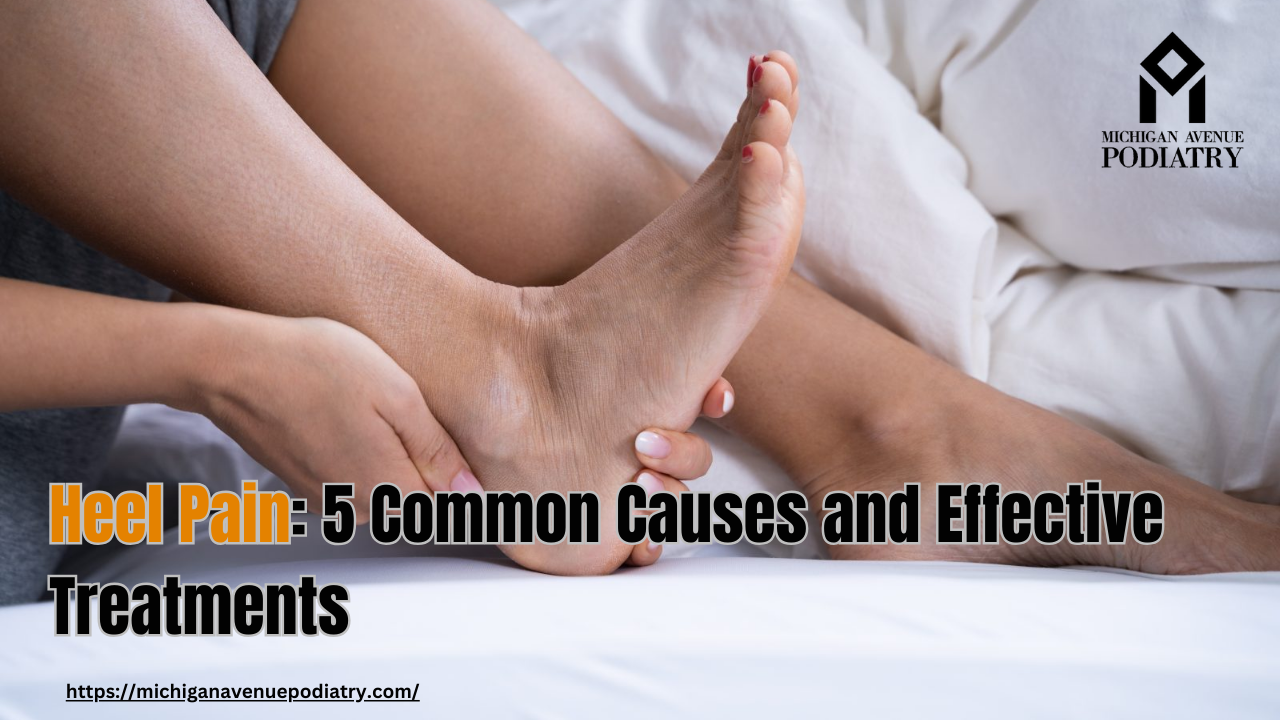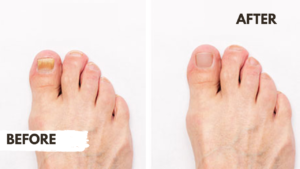Heel pain is a prevalent foot condition that can significantly impact mobility and quality of life. Whether it’s sharp and stabbing or dull and achy, heel pain can make simple activities like walking or standing unbearable. In this informative blog post, we’ll explore the five common causes of heel pain, delve into their symptoms, and discuss effective treatment options with insights from podiatrists and foot doctors.
5 Common Causes and Effective Treatments for Heel Pain
Plantar Fasciitis:
Plantar fasciitis is one of the leading causes of heel pain, characterized by inflammation of the plantar fascia—a thick band of tissue that runs along the bottom of the foot.
Symptoms include pain and stiffness in the heel, especially with the first steps in the morning or after prolonged periods of rest.
Treatment options include rest, ice therapy, stretching exercises, orthotic inserts, physical therapy, and corticosteroid injections. In severe cases, surgery may be necessary to release the tight plantar fascia.
Achilles Tendinitis:
Achilles tendinitis is inflammation of the Achilles tendon, which connects the calf muscles to the heel bone. It commonly occurs in athletes or individuals who engage in repetitive activities that strain the tendon.
Symptoms include pain and stiffness in the back of the heel, swelling, and difficulty walking or running.
Treatment may involve rest, ice therapy, stretching exercises, physical therapy, orthotic devices, and nonsteroidal anti-inflammatory drugs (NSAIDs). Severe cases may require immobilization in a walking boot or cast and, in rare instances, surgical repair of the tendon.
Heel Spurs:
Heel spurs are bony growths that develop on the underside of the heel bone, often associated with plantar fasciitis or other conditions causing chronic inflammation of the plantar fascia.
Symptoms may include intermittent or chronic pain in the heel, particularly when walking or standing for long periods.
Treatment focuses on addressing the underlying cause of inflammation, such as plantar fasciitis, through conservative measures like stretching exercises, orthotic inserts, and footwear modifications. Surgical removal of the heel spur may be considered in severe cases.
Bursitis:
Bursitis is inflammation of the bursa—a fluid-filled sac that cushions and lubricates the joints. In the heel, bursitis may occur beneath the heel bone or at the back of the heel.
Symptoms include localized pain, swelling, and tenderness in the affected area.
Treatment typically involves rest, ice therapy, cushioning pads, orthotic devices, NSAIDs, and corticosteroid injections. In refractory cases, aspiration of fluid from the bursa or surgical drainage may be necessary.
Tarsal Tunnel Syndrome:
Tarsal tunnel syndrome is a compression neuropathy of the posterior tibial nerve as it passes through the tarsal tunnel—a narrow space on the inside of the ankle.
Symptoms may include burning pain, tingling, numbness, or weakness in the heel and arch of the foot.
Treatment options include rest, immobilization, orthotic devices, physical therapy, NSAIDs, corticosteroid injections, and in severe cases, surgical decompression of the tarsal tunnel.
Conclusion:
Heel pain can stem from various underlying conditions, each requiring a tailored approach to treatment. If you’re experiencing persistent heel pain, it’s essential to consult a podiatrist or foot doctor for an accurate diagnosis and personalized treatment plan. By addressing the root cause of your heel pain and implementing appropriate interventions, you can alleviate discomfort, improve mobility, and restore function to your feet. Don’t let heel pain hold you back—seek professional help and take the first step toward healthier, happier feet.




